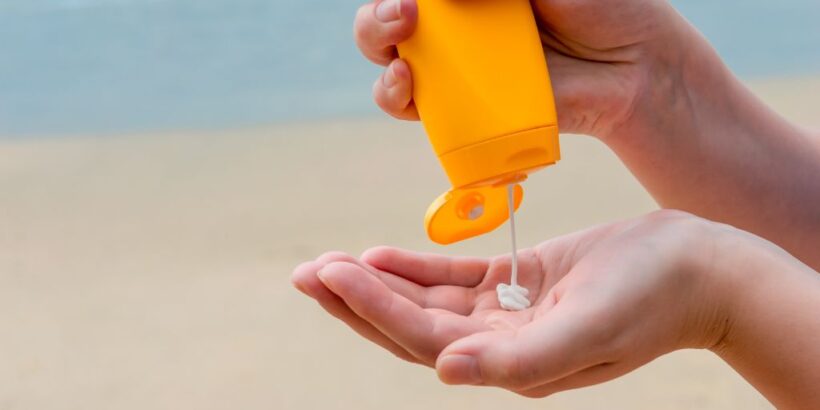There’s nothing worse than turning into a lobster while on vacation. So naturally, many travelers take sunscreen with them through airport security every year, hoping to get protection from the unrelenting Sun.
But bringing sunscreen on a plane presents a few specific issues that you want to be aware of before you head to the airport.
In this article, we will break down all of the TSA rules and other FAA restrictions you need to think about when taking sunscreen through airport security.
Table of Contents
Can you bring sunscreen on a plane?
Yes, you can bring sunscreen on a plane as a carry-on item as long as you comply with the TSA liquids 3.4 ounce rule. You can also bring sunscreen in your checked baggage but you need to be mindful of FAA restrictions on the quantity and size of aerosol bottles you can bring.
Be careful applying sunscreen before your flight because you could trigger the alarm while going through security if you get swabbed by a TSA agent. Also, be aware that certain states and countries banned certain types of sunscreens that contain chemicals that could be harmful to coral reefs.
If you want to know more about traveling with sunscreen through TSA, keep reading below!
Tip: Use the free app WalletFlo to help you travel the world for free by finding the best travel credit cards and promotions!
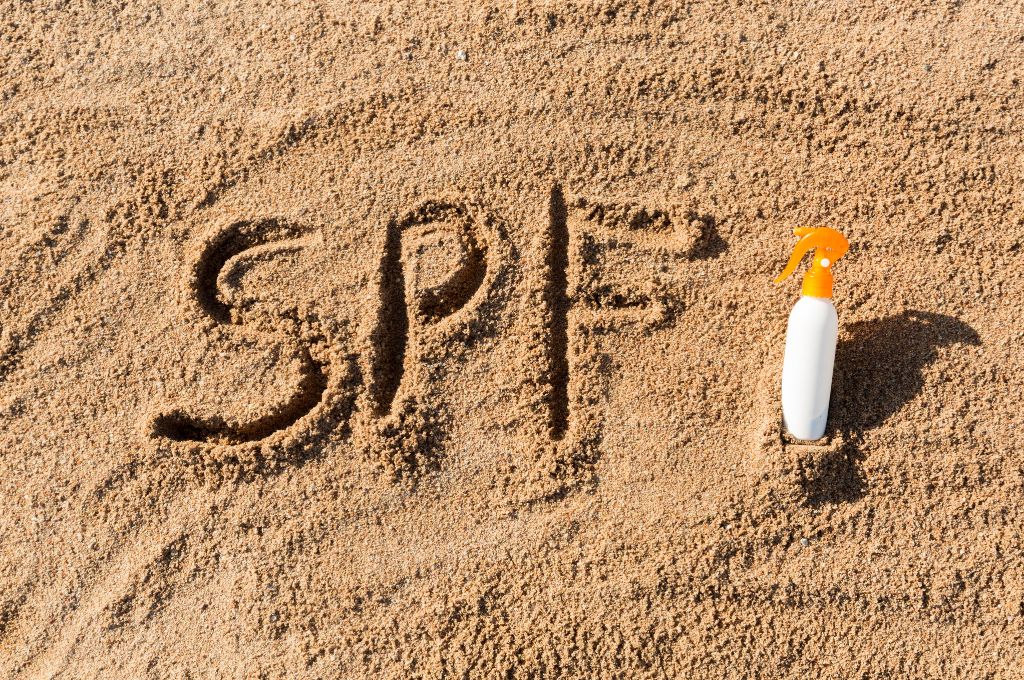
Important: Getting through airport security with sunscreen
If you were recently having fun in the sun and applying sunscreen before heading through airport security, be aware that some sunscreen or SPF products may contain glycerin.
That’s important because glycerin is one of the chemicals that can trigger the alarm whenever getting swabbed.
What does it mean to get swabbed?
One way that TSA agents try to keep passengers safe is by detecting whether or not passengers have come into contact with explosive materials. And one of the ways that they do this is by taking samples from the hands of passengers as well as their luggage contents.
If that sample contains traces of explosives, then the passenger will likely be subject to questioning and perhaps even a much more invasive search. That invasive search could involve a pat down and more swabbing which could take an extra 20 minutes or longer.
When going through airport security, you don’t always get swabbed but if you applied sunscreen containing glycerin on the day of your travels, there is a chance you would test positive if you got swabbed!
You can read more about what it’s like to get swabbed at the airport here.
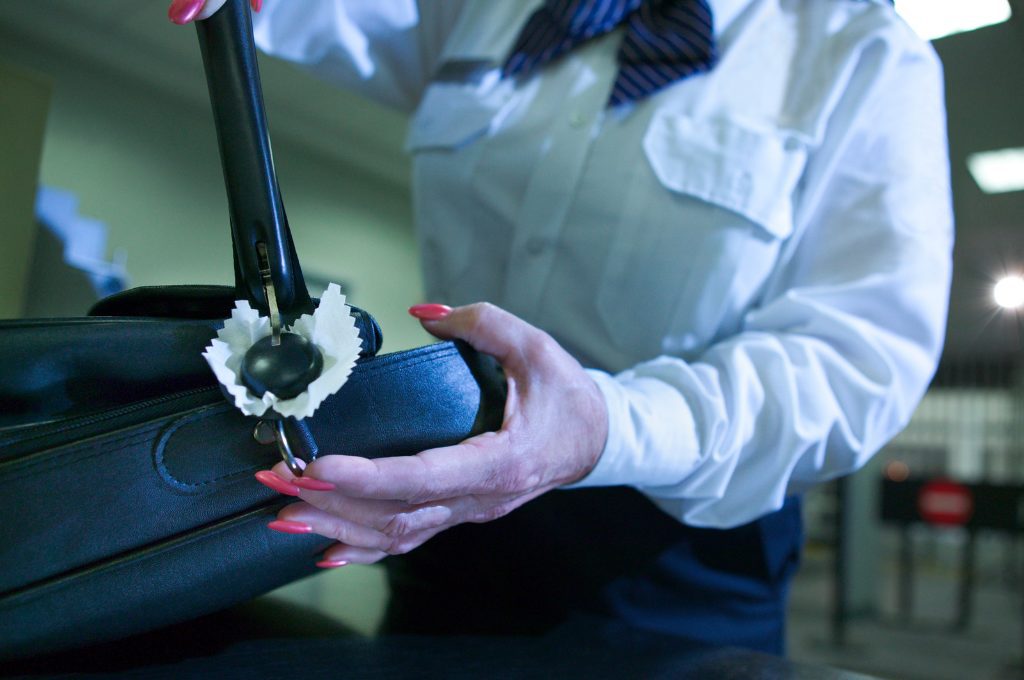
Bringing sunscreen as a carry-on (TSA liquids rule)
TSA allows you to bring liquids like sunscreen on board as long as they are contained within a container no larger than 3.4 fluid ounces or (100 mL) and all of those containers can fit comfortably inside of one clear quart sized bag (this is known as the TSA Liquids 3-1-1 Rule).
You will need to remove this liquids bag from your carry-on bag when going through the security checkpoint unless you have TSA Pre-Check.
Keep in mind that this will focus is on the size of your liquid container and not the amount of liquids on the inside.
For example, if you had a five ounce container of sunscreen but only 3 ounces of sunscreen on the inside, that would not be permitted. The actual container needs to have 3.4 ounces of volume or less.
Also, this 3.4 ounce limitation also applies to sunscreen spray or aerosol bottles. (If you plan on bringing a spray bottle of sunscreen make sure that you bring it with the cap attached).
It’s really easy to find travel bottles of sunscreen under 3.4 ounces so it shouldn’t be a problem to get a container of sunscreen lotion that can go with you.
If you have a larger bottle of sunscreen that you really like, it is possible for you to pour this into your own 3.4 ounce travel container. You could always write “sunscreen” on the bottle for a reminder and perhaps to give TSA a hint of what is in the bottle (although it is not necessary).
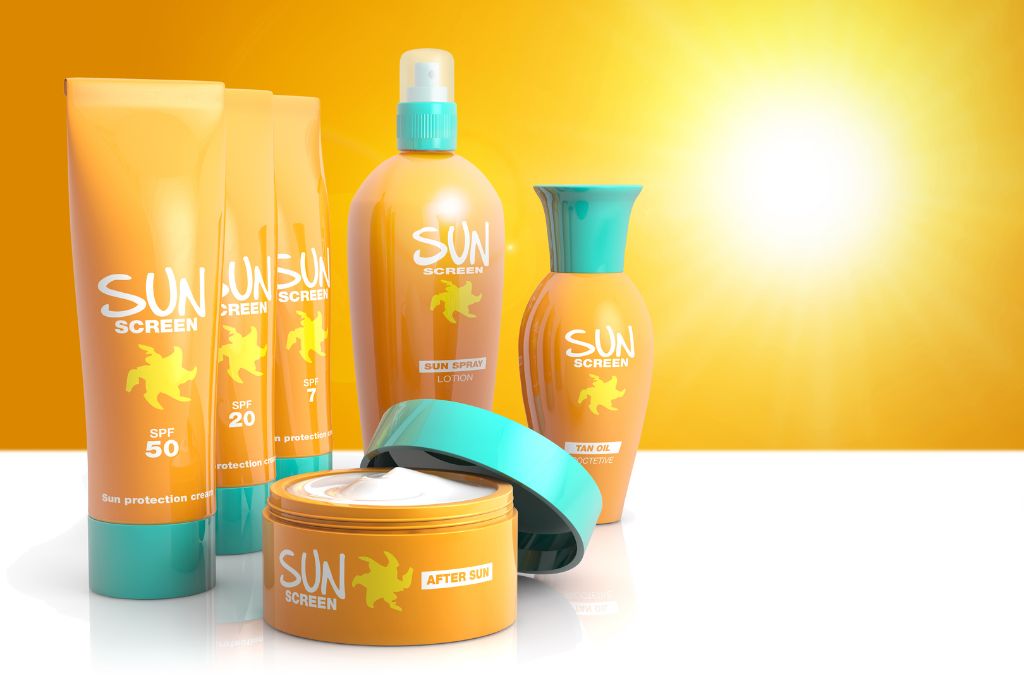
I thought I could bring bigger bottles of sunscreen through TSA?
If you are a bit confused about the size limitation for sunscreen, it’s completely understandable.
At one point, TSA announced that they were going to allow sunscreen bottles larger than 3.4 ounces to be taken through security. This was apparently going to be done to help reduce the threat of skin cancer and UV damage to travelers.
In other words, sunscreen was going to be treated as a medically necessary liquid which would place it under the medical exception that allows for larger liquids bottles.
But as soon as this announcement was leaked it was rescinded and TSA clarified that sunscreen is still subject to the liquids 3.4 ounce rule.
“Our website incorrectly reported that sunscreen containers larger than 3.4 oz. were allowed in carry-on bags if medically necessary. That error has been corrected. Sunscreen in carry-on bags must be 3.4 oz. or less. Larger quantities should be placed in checked baggage.”
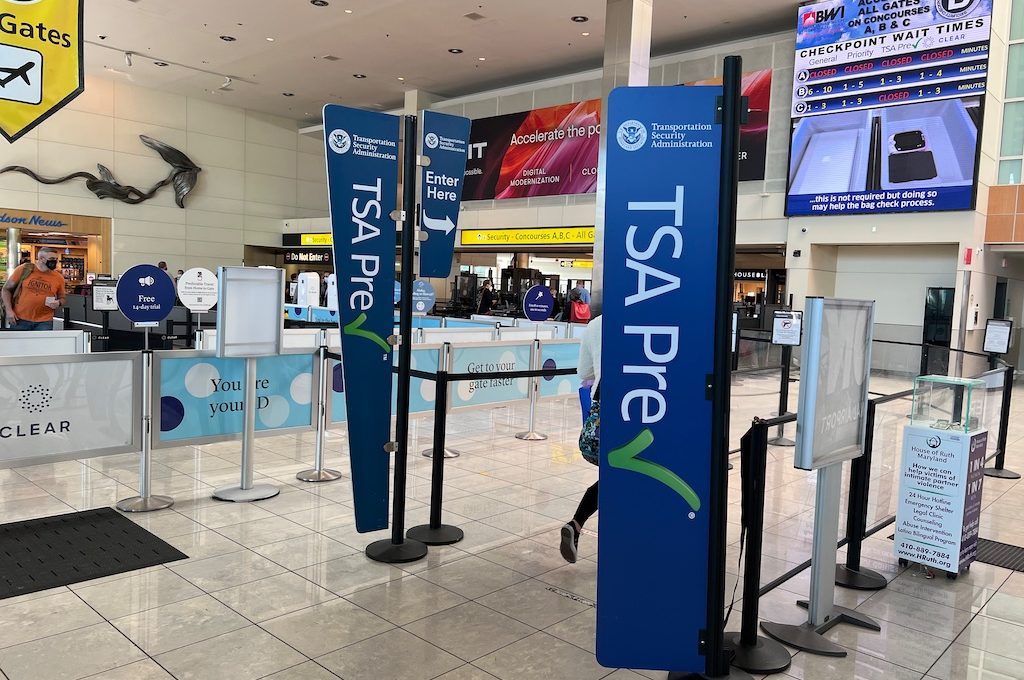
Flying with sunscreen in the cabin (applying it mid-flight)
Lots of people apply lotion during a flight because it helps them reduce uncomfortable dry skin but applying sunscreen during a flight would just be stupid, right?
Well, maybe not.
Marc Glashofer, M.D., a dermatologist and a fellow of the American Academy of Dermatology, told CN Traveler that it is possible to get sunburned on a plane.
But worse than that, the windows on a plane can be penetrated by UVA rays, which penetrate your skin to a deeper level and are often the culprit for causing skin cancer.
A lot of the risk pertains to pilots who are constantly in the air and exposed to UV rays via much larger windows than what a typical passenger is exposed to.
For example, one study in JAMA Dermatology found that a single hour flying at 30,000 feet could expose pilots to an equivalent amount of UV radiation that someone would get spending just 20 minutes in a tanning bed.
However, some reputable sources claim that plane windows block out a lot of the harmful UV rays including both UVA and UVB.
So the risk of skin cancer or UV damage is probably low for passengers.
But for skin conscious travelers, you may feel better about your seat selection if you have sunscreen on hand just in case that Sun starts to hit your face a little bit too much.
Of course, if you select the window seat it’s your choice to put down the window shade so you could always reduce that risk by just shutting the shade.
If you do decide to apply sunscreen in the cabin, just be careful about pulling out any type of bottles because your bottle could explode in the plane and create a big mess for everyone nearby.
A good way to avoid this is to squeeze out the air from the bottle whenever you are on the ground so that the air has room to expand at altitude.
Also, try to cover the nozzle with a bag (perhaps your liquids bag) whenever you open it so that if it does burst, it won’t get everywhere.
And finally, consider selecting sunscreen that does not contain a scent because it’s not very considerate to unleash a strong scent throughout the cabin.
Related: What Can I Bring In My Purse on a Plane?

Bringing aerosol sunscreen in your checked baggage
When you travel with aerosol sunscreen in your checked baggage, you have to keep in mind the FAA restrictions on the total quantity and size of your medicinal and toiletry articles.
For checked baggage, the FAA states the capacity of each aerosol container must not exceed 0.5 kg (18 ounces) or 500 ml (17 fluid ounces). It should not be difficult to find aerosol sunscreen bottles smaller than 17 fluid ounces so you don’t have a lot to worry about in most cases.
The aggregate total of all of your toiletry items in your checked baggage cannot exceed 2 kg (70 ounces) or 2 L (68 fluid ounces). That would be a lot of aerosol sunscreen for most people so once again it shouldn’t be hard to abide by that requirement.
Once again, if you have aerosol bottles make sure that you have them covered with the cap to prevent accidental release.
You also have to be mindful about the sunscreen bottle exploding in your luggage.
The best way to prevent something from happening is to try to squeeze out any air that you can before you place it in your checked baggage.
In addition to that, double bag the sunscreen and perhaps consider storing it in a separate compartment so that you can minimize the damage from a spill.
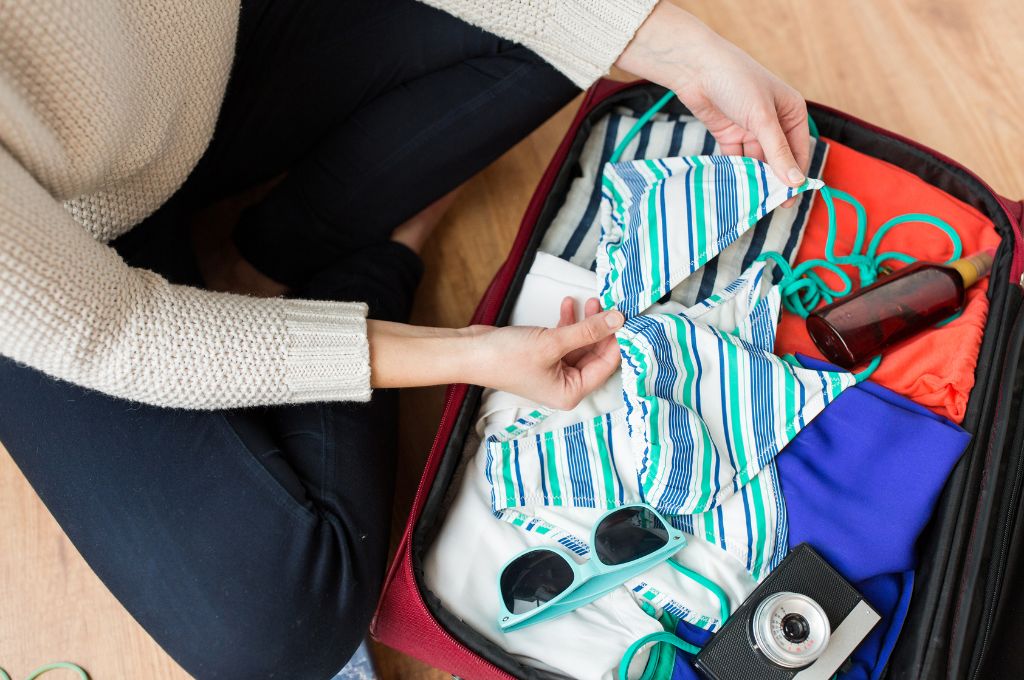
Buying sunscreen at your destination
Sunscreen is one of the easiest items to find at any type of tourist destination or tropical vacation spot.
The problem is sunscreen at these places, especially in shops at all-inclusive resorts, can be extremely expensive. We’re talking $25 plus per bottle.
Talk about getting squeezed!
Moreover, they may not sell small bottles so you could be forced to buy a larger, more expensive bottle that you may only use a small portion of on your trip.
For this reason, I usually try to purchase a couple of small sunscreen bottles or spray canisters that I bring with us when we travel to tropical destinations.
(If I’m using checked baggage, I’ll just purchase a big bottle and bring that along.)
You can also look into packages that come with sunscreen. For example, if you were renting a car through Turo or other types of rental companies, sometimes you can get free sunscreen with your rental or just add it on.
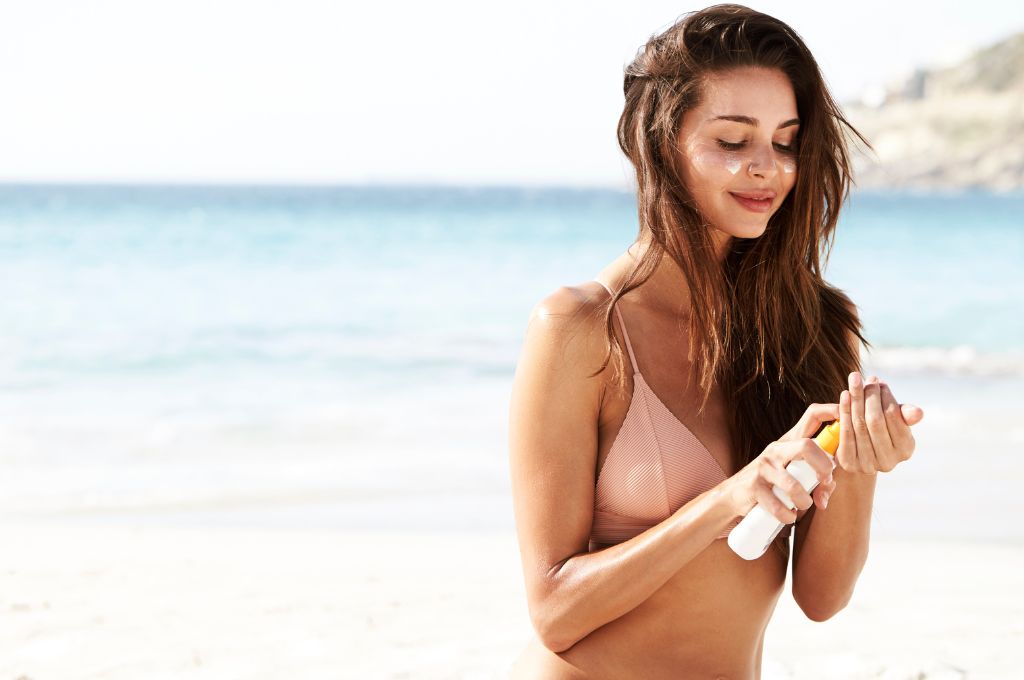
Bringing sunscreen to different countries or states
Some sunscreens may not be allowed in certain countries or even certain states such as Hawaii.
There has been a growing trend of banning certain sunscreen ingredients because of the harm that they could do to reef systems. For example, Aruba banned sunscreens containing Oxybenzone.
In 2021, Hawaii banned sunscreens containing both oxybenzone and octinoxate as did the US Virgin Islands and Key West.
I’m sure many more will follow.
So if you are heading to a tropical destination where you might find coral reef or where scuba diving or snorkeling are popular, be sure to double check that your sunscreen is allowed.
Look for sunscreens that are labeled as “reef safe” or “biodegradable.” I personally use Coppertone Sport 50 SPF 4-in-1 that is free of many of the prohibited active ingredients.
In addition, you can consider purchasing diving shirts that block out UV rays so that you don’t have to worry about applying a lot of extra sunscreen.
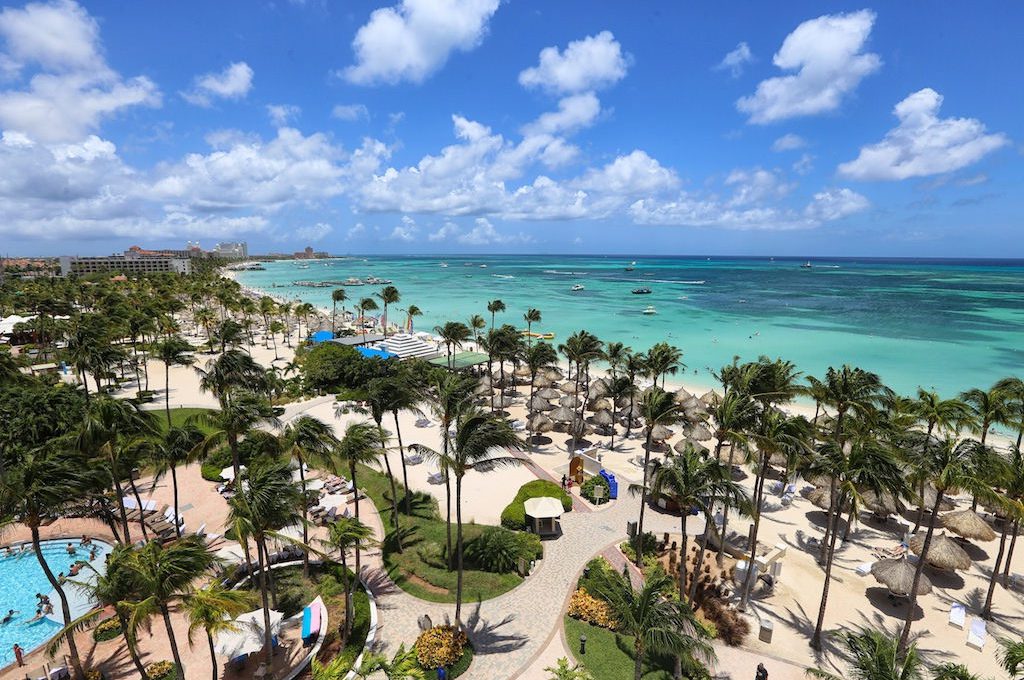
Final word
When traveling with sunscreen, you need to be mindful about the liquids rule and also be careful about applying sunscreen before you head to the airport because you could trigger the alarm if you get swabbed by TSA. If you put the bottles or spray canisters in your checked baggage make sure you comply with the FAA rules mentioned above.
And finally, try to bring your own sunscreen so that you can avoid getting burned by the hotel, and be mindful about the local laws that could prohibit certain types of sunscreen.
Also, watch this video:
Daniel Gillaspia is the Founder of UponArriving.com and the credit card app, WalletFlo. He is a former attorney turned travel expert covering destinations along with TSA, airline, and hotel policies. Since 2014, his content has been featured in publications such as National Geographic, Smithsonian Magazine, and CNBC. Read my bio.

